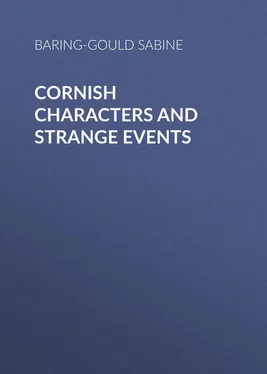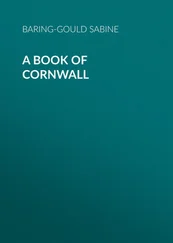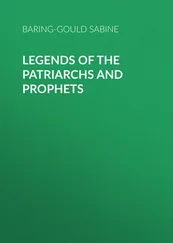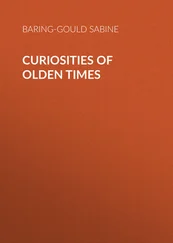Sabine Baring-Gould - Cornish Characters and Strange Events
Здесь есть возможность читать онлайн «Sabine Baring-Gould - Cornish Characters and Strange Events» — ознакомительный отрывок электронной книги совершенно бесплатно, а после прочтения отрывка купить полную версию. В некоторых случаях можно слушать аудио, скачать через торрент в формате fb2 и присутствует краткое содержание. Жанр: foreign_antique, foreign_prose, на английском языке. Описание произведения, (предисловие) а так же отзывы посетителей доступны на портале библиотеки ЛибКат.
- Название:Cornish Characters and Strange Events
- Автор:
- Жанр:
- Год:неизвестен
- ISBN:нет данных
- Рейтинг книги:4 / 5. Голосов: 1
-
Избранное:Добавить в избранное
- Отзывы:
-
Ваша оценка:
- 80
- 1
- 2
- 3
- 4
- 5
Cornish Characters and Strange Events: краткое содержание, описание и аннотация
Предлагаем к чтению аннотацию, описание, краткое содержание или предисловие (зависит от того, что написал сам автор книги «Cornish Characters and Strange Events»). Если вы не нашли необходимую информацию о книге — напишите в комментариях, мы постараемся отыскать её.
Cornish Characters and Strange Events — читать онлайн ознакомительный отрывок
Ниже представлен текст книги, разбитый по страницам. Система сохранения места последней прочитанной страницы, позволяет с удобством читать онлайн бесплатно книгу «Cornish Characters and Strange Events», без необходимости каждый раз заново искать на чём Вы остановились. Поставьте закладку, и сможете в любой момент перейти на страницу, на которой закончили чтение.
Интервал:
Закладка:
He bought Whiteford, in the parish of Stoke Climsland, and greatly enlarged the house. In 1771 he was appointed Sheriff of Cornwall, and in March, 1772, he married Philadelphia, third daughter of Wm. Battye, m. d., a somewhat distinguished physician living in Bloomsbury.
From this period till the autumn of 1782 he lived in retirement at Whiteford.
Whilst in India, Call had not forgotten his parents and sister at home, and had sent to his mother priceless Indian shawls, which she, not knowing their value, cut up and turned into under-petticoats for herself and daughter and maids. A pipe of Madeira sent to the father was also as little appreciated. It was distributed among the farm-labourers during harvest time to economize the cider.
Now that he was in England and wealthy, he resolved on doing something for his sister. She had married Cadwalader Jones, the vicar of the parish, and the vicarage was a small, mean building, so Cadwalader Jones had taken the manor house that was near the church on a long lease from the Orchards, who were lords of the manor. This house had been a cell of Hartland Abbey, but at the Restoration had been given to the Chammonds. That family had died out, and now it had come to the Orchards, owners of Hartland Abbey. Call rebuilt the house, or, to be more exact, built on a modern house to the old, and installed Cadwalader and his sister in the new mansion; he also made for them a large walled garden. When he did this, he was under the impression that the property belonged to Cadwalader, and not till he had completed his building did he learn that Mr. Jones had only a lease of it. Moreover, Mrs. Jones did not live to enjoy the new house very long, as she died in 1780, and then Cadwalader married again. In course of time Cadwalader went to join his ancestors, and thereupon Mr. Hawkey saw and loved the widow and the mansion, and married her. Thus it came about that the manor house built for Mrs. Jane Jones passed into other hands. But thus it happens also that through Miss Charlotte Hawkey we have some account of Sir John Call.
Lord Shelburne, when Prime Minister, being desirous of investigating some of the existing abuses and reforming some of the public departments, fixed on Call and engaged him along with Mr. Arthur Holdsworth, of Dartmouth, to inquire into the state and management of Crown lands, woods, and forests, which had long been neglected; Call had seen this with regard to the Duchy property at his doors, and had drawn attention to it. In November, 1782, they made their first report; but a change of Ministry taking place soon after, their proceedings were interrupted till the Duke of Portland, then First Lord of the Treasury, authorized them to continue their investigation. Before they had gone far another change took place in the Ministry, and Pitt became Prime Minister. These frequent interruptions interfered with the progress of the investigation, and to obviate that, in 1785-6 Sir Charles Middleton, Call, and Holdsworth were appointed permanent Parliamentary Commissioners.
Call became a banker, a manufacturer of plate-glass, and a copper-smelter. He designed and saw to the execution of the Bodmin gaol in 1779. He was elected M. P. for Callington in 1784, and retained his seat till 1801. On July 28th, 1791, he was created a baronet, and granted as his arms, gules , three trumpets fessewise in pale, or ; as crest, a demi-lion ramp. holding between the paws a trumpet erect, or .
By his wife he had six children. In 1785 he purchased the famous house of Field-Marshal Wade, in Old Burlington Street. He became totally blind in 1795, and died of apoplexy at his residence in town on March 1st, 1801, and was succeeded in the baronetcy by his son, William Pratt Call, who died in 1851, leaving a son, William Berkeley Call, the third baronet, who died in 1864, and with the son of this latter, Sir William George Montague Call, the fourth baronet, the title became extinct. It will be noticed that the two last affected aristocratic Christian names, Berkeley and Montague. Whiteford was sold to the Duchy of Cornwall, and all the noble trees in the park were cut down and turned into money, and the mansion converted into an office for the Duchy. Davies Gilbert, in his Parochial History of Cornwall , tells a couple of anecdotes of Sir John, but they are too pointless to merit repetition.
Call was one of those admirable, self-made men who have been empire-makers in the East, and, better than that, have been makers of the English name as synonymous with all that is powerful and true and just. He well deserved the title accorded to him. He was a man of whom Cornwall may be proud, and it needed no trumpets in his arms and fictions about the origin of his family to make the name honourable.
As Dr. Johnson said, "There are some families like potatoes, whose only good parts are underground."
The authorities for the life of Sir John Call are Playfair's British Family Antiquity , 1809; Clement R. Markham's Memoir on the Indian Surveys , 1878; H. G. Nicholl's Forest of Dean ; and Neota , by Charlotte Hawkey, 1871.
The grant of the baronetcy to Sir John Call, dated 1795, is now in the Museum of the Royal Institution of Cornwall, at Truro.
JOHN KNILL
In August, 1853, appeared the following account in the Gentleman's Magazine : —
"An eccentric old gentleman of the name Knill, a private secretary some fifty or sixty years ago to the Lord-Lieutenant of Ireland, becoming afterwards collector of the port of S. Ives, built a three-sided pyramid of granite on the top of a high hill, near the town of S. Ives. The pyramid is represented as a pocket edition of an Egyptian one, and in it this gentleman caused a chamber to be built, with a stone coffin, giving out his intention to be buried there, and leaving a charge on an estate to the corporation of S. Ives for the maintenance and repair, etc., of the pyramid. He, however, died in London; and by his latest will, so far from perpetuating the ostentatious idea, desired that his body should be given up to the surgeons for dissection, a penance, it is supposed, for past follies, after which the remains were buried in London. The pyramid, however, still stands as a landmark. On one side, in raised letters in granite, appear the words 'Hic jacet nil.' It was understood that the 'K' and another 'l' would be added when the projector should be placed within; and on the other side, 'Ex nihilo nil fit,' to be filled up in like manner, Knill. The mausoleum obtained then, and still bears the name of Knill's Folly."
This account, full of inaccuracies, called forth a letter to the editor from a relative of John Knill, at Penrose, by Helston, dated October, 1853, which appeared in the November issue of the same magazine. He stated that John Knill was educated for the law, but did not adopt it as a profession. He preferred to accept the office of collector of customs at S. Ives. After a while he was sent as Inspector-General of Customs to the West Indies, whence he returned to his duties at S. Ives, after having discharged his office of inspectorship. In 1777 the Earl of Buckinghamshire, who was recorder of S. Ives, invited Mr. Knill to accompany him to Ireland as his private secretary, when he, the earl, had been made lord-lieutenant. The offer was accepted.
In 1782, thirty years before his death, he erected the mausoleum, partly actuated by a philanthropic motive as affording a landmark to ships approaching the port, and partly by a wish to find employment for men at a time of considerable distress, having also a desire to be buried there, if the ground could be consecrated. This intention was afterwards abandoned.
Mr. Knill resided for some years previous to his death in Gray's Inn, and was a bencher of that society. He died there in 1811, and was buried in the vaults of S. Andrew's, Holborn. On one side of the monument is the word "Resurgam." On the second side, "I know that my Redeemer liveth," and on the third is no inscription at all, and the silly puns given by the informant of the Gentleman's Magazine had no existence save in the imagination of the correspondent.
Читать дальшеИнтервал:
Закладка:
Похожие книги на «Cornish Characters and Strange Events»
Представляем Вашему вниманию похожие книги на «Cornish Characters and Strange Events» списком для выбора. Мы отобрали схожую по названию и смыслу литературу в надежде предоставить читателям больше вариантов отыскать новые, интересные, ещё непрочитанные произведения.
Обсуждение, отзывы о книге «Cornish Characters and Strange Events» и просто собственные мнения читателей. Оставьте ваши комментарии, напишите, что Вы думаете о произведении, его смысле или главных героях. Укажите что конкретно понравилось, а что нет, и почему Вы так считаете.












